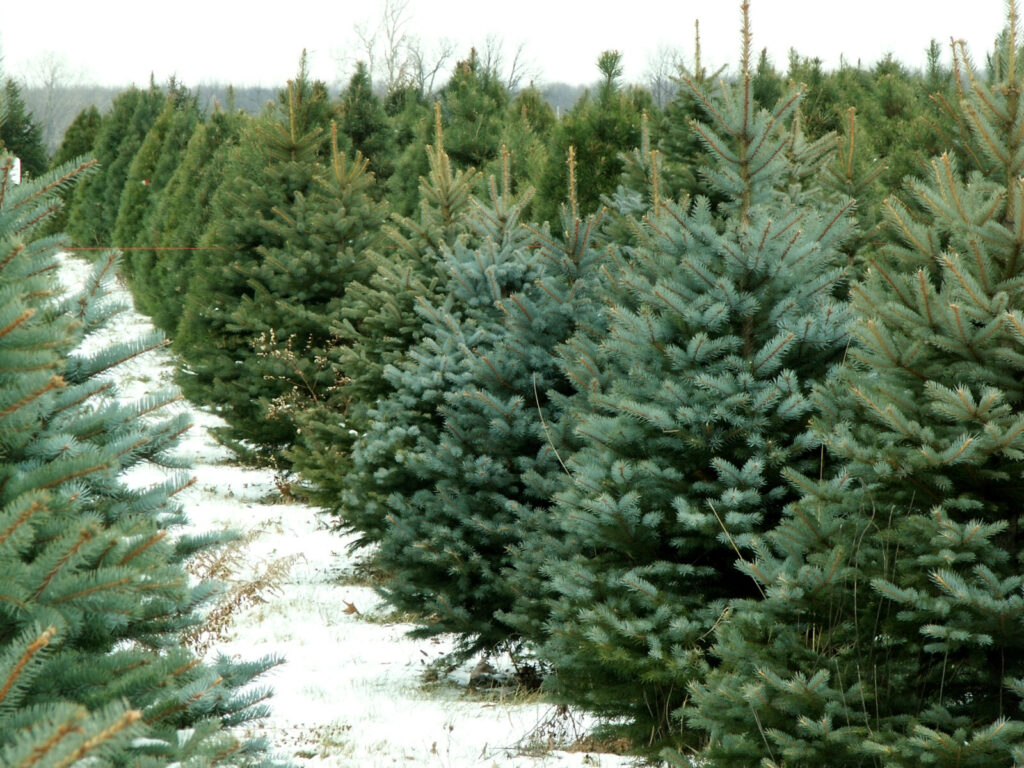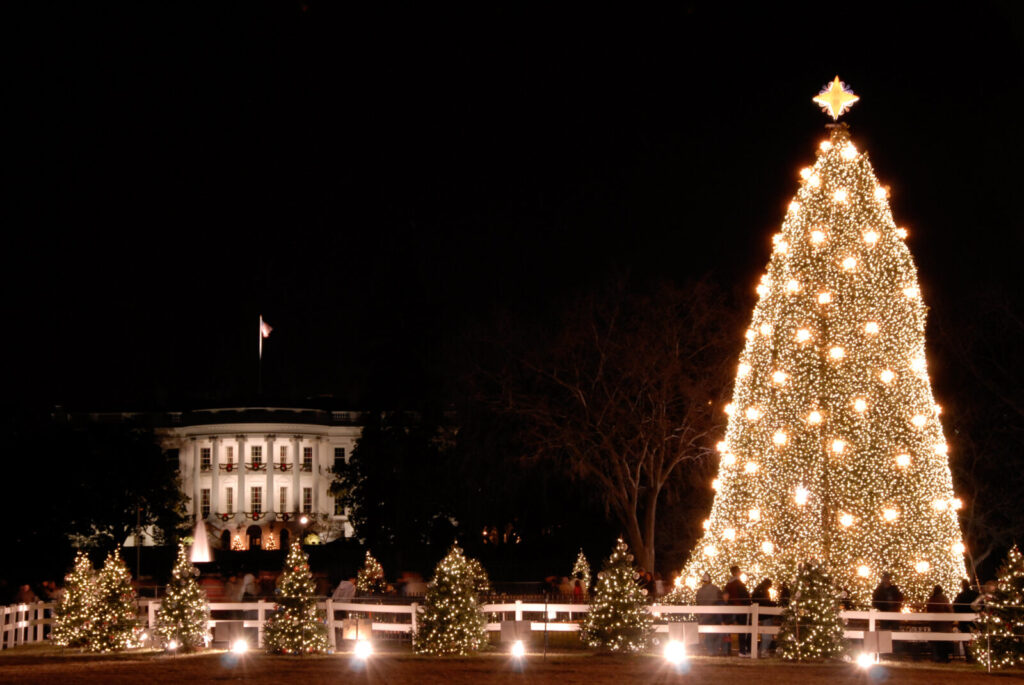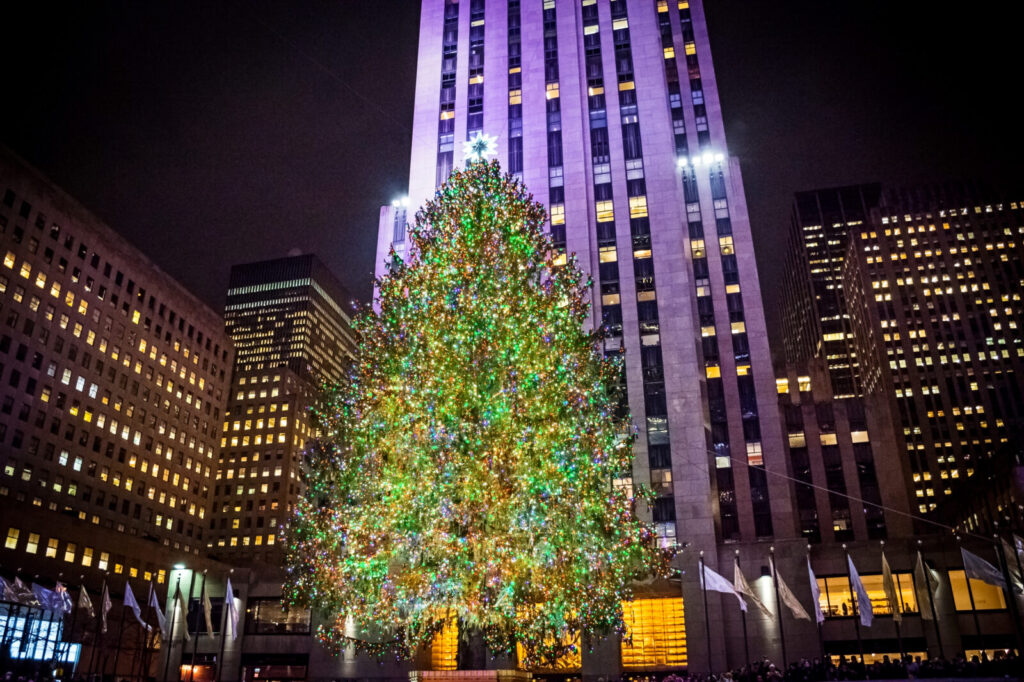It’s no surprise that the tradition of bringing cut, live trees into your house and decorating them did not start off here in the United States, but we have definitely put our own twist on it. Depending on where you are, your native Christmas Tree may be anything from a Blue Spruce to a classic Balsam Fir. Over the years, the availability and preference of species has definitely shifted, but we have native trees to thank for starting the yearly tradition of several well-known Christmas trees around the nation.
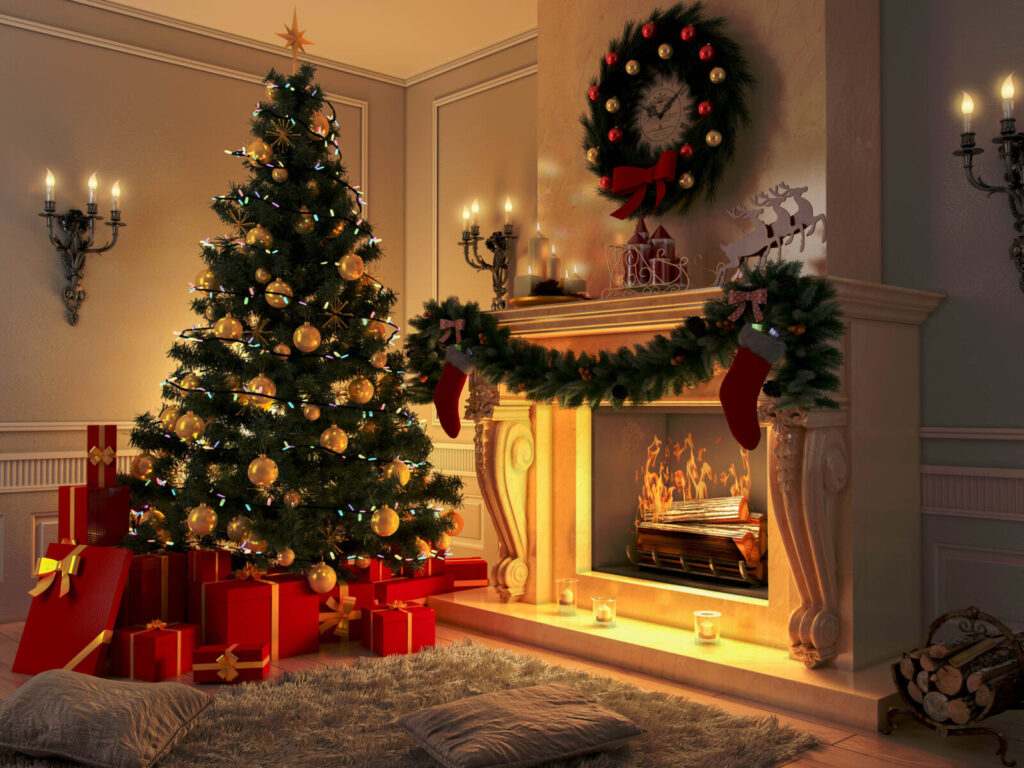
The First Appearance of Christmas Trees in the US
Christmas trees were first recorded as being used in the United States in the 1820s in a Pennsylvania town primarily of German descent. The community would cut down the trees for display around the town. While the tradition may have been established several years prior, this was the first time someone recorded the act of cutting down a live tree for it. Other areas in Pennsylvania with large German populations have records of community “trees”, which were wooden pyramids decorated with candles, as early as 1747. At the time, anything related to celebrating Christmas, including having a tree, had pagan connotations, leaving these German towns subject to ridicule.
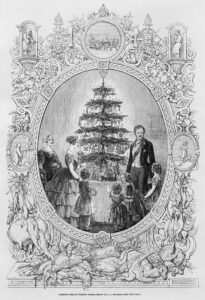 It wasn’t until 1846 that Christmas trees became fashionable in Europe. Queen Victoria, quite a trendsetter for the times, appeared sketched with her family alongside a tabletop tree in the Illustrated London News. Even then, it took 5 more years for the first retail tree lot to appear on a sidewalk in New York City. These trees were harvested from native forests and sold out swiftly. Christmas trees had finally made their mark in U.S. homes! This was shortly thereafter reinforced when President Franklin Pierce decorated an evergreen on the White House lawn in 1853. It is said that Pierce was also the first to bring a Christmas tree inside the White House, with other sources stating that didn’t happen until 1889 during the Benjamin Harrison administration. Regardless, these trees were both native and started a string of new decorating trends to arise from the White House, including Grover Cleveland’s replacing candles with a string of electric lights in 1894.
It wasn’t until 1846 that Christmas trees became fashionable in Europe. Queen Victoria, quite a trendsetter for the times, appeared sketched with her family alongside a tabletop tree in the Illustrated London News. Even then, it took 5 more years for the first retail tree lot to appear on a sidewalk in New York City. These trees were harvested from native forests and sold out swiftly. Christmas trees had finally made their mark in U.S. homes! This was shortly thereafter reinforced when President Franklin Pierce decorated an evergreen on the White House lawn in 1853. It is said that Pierce was also the first to bring a Christmas tree inside the White House, with other sources stating that didn’t happen until 1889 during the Benjamin Harrison administration. Regardless, these trees were both native and started a string of new decorating trends to arise from the White House, including Grover Cleveland’s replacing candles with a string of electric lights in 1894.
Are Christmas Trees Sustainable?
A few years later in 1901, Theodore Roosevelt began to raise concerns regarding America’s new holiday craze and what it was doing to the native conifer forests. He chose not to have a tree in the White House, but to his surprise he found his sons had snuck a small one in their room. The same year Roosevelt was elected was also the year that Christmas tree farms started popping up to supplement the increasing tree demand. These started in New Jersey and quickly branched out, giving native forests a chance to replenish themselves. Nowadays, 98% of all natural Christmas trees are sourced from farms, continuing the effort of forest conservation started all those years ago.
The National Christmas Tree
While trees in Europe were only 4 feet at most, Americans started decorating larger and larger trees, starting with the introduction of the National Christmas Tree at the White House 100 years ago this year! A 48-foot Balsam Fir was gifted to President Coolidge by Middlebury College in Vermont and drew a crowd of over 6,000 on Christmas Eve in 1923 for the first ever tree lighting. The following year, the National Tree continued the tradition by using a living, planted tree, setting the example for community Christmas trees to be the same, an effort supported by the American Forestry Association. Several living trees were planted, including non-natives, until 1954, when cut trees were delivered for the next 18 years from various states. In 1973, living Christmas trees made their way back to our Nation’s capital, starting off strong with a Colorado Blue Spruce. Currently, the National Christmas Tree is a White Fir, keeping to the roots of an American native tree.
The Rockefeller Center Christmas Tree
Around the same time as the National Christmas Tree’s birth, New York City started its own tradition in the historic Rockefeller Center when a few construction workers pulled together and bought a 20-foot tall Balsam Fir and placed it in the square in 1931. The only decorations were handmade garlands made by the worker’s families, a huge stretch from today’s 50,000 multi-colored LED lights. It took 2 years for the next tree to make its appearance, thus starting the annual tradition of the tree lighting ceremony. Even though the last native tree used was in 1981, a White Spruce, we have our native trees to thank for bringing this tradition to life.
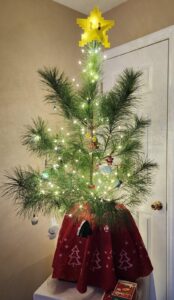 It’s hard to imagine Christmas without trees or community lighting ceremonies. Thanks to these native trees, and some daring folks, we can continue the tradition of decorating and sharing our trees. You may even consider using a potted, living tree in your own home to aid in the conservation of our native trees.
It’s hard to imagine Christmas without trees or community lighting ceremonies. Thanks to these native trees, and some daring folks, we can continue the tradition of decorating and sharing our trees. You may even consider using a potted, living tree in your own home to aid in the conservation of our native trees.
American Native Plants supplied this potted native White Pine for an employee’s family Christmas Tree this year, starting a new tradition of sustainable holiday decorating. Why not start your own tradition?

